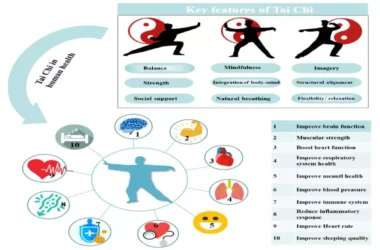Sepsis, often referred to as septicemia, is a life-threatening medical condition that arises when the body’s response to infection causes widespread inflammation.
This can lead to tissue damage, organ failure, and death if not promptly treated.
Recognizing the signs of sepsis and understanding its causes and treatments is crucial for timely medical intervention.
What is Sepsis?
Sepsis occurs when the immune system’s response to an infection becomes uncontrolled, leading to widespread inflammation. This condition can start from any type of infection, including bacterial, viral, or fungal, and can originate anywhere in the body, such as the lungs, urinary tract, skin, or gastrointestinal system.
Causes of Sepsis
Sepsis can develop from various infections, but the most common sources include:
- Pneumonia: Lung infections can lead to sepsis if not treated promptly.
- Urinary Tract Infections (UTIs): Infections in the kidneys or bladder can spread, causing systemic inflammation.
- Abdominal Infections: Conditions like appendicitis or diverticulitis can lead to sepsis.
- Skin Infections: Cuts, burns, or surgical wounds can become infected and escalate to sepsis.
Symptoms of Sepsis
Early detection of sepsis is vital for effective treatment. Symptoms can vary but often include:
- Fever or Hypothermia: High or unusually low body temperature.
- Increased Heart Rate: A heart rate higher than 90 beats per minute.
- Rapid Breathing: More than 20 breaths per minute.
- Altered Mental State: Confusion, agitation, or disorientation.
- Severe Pain or Discomfort: Generalized body pain or discomfort.
Risk Factors for Sepsis
Certain groups are more vulnerable to sepsis, including:
- Elderly Individuals: Age-related immune system decline increases susceptibility.
- Infants and Young Children: Underdeveloped immune systems put them at higher risk.
- People with Chronic Conditions: Conditions like diabetes, cancer, and liver disease can weaken the immune system.
- Immunocompromised Individuals: Those undergoing chemotherapy or taking immunosuppressive drugs are at higher risk.
Diagnosing Sepsis
Timely diagnosis is critical in managing sepsis. Medical professionals use various tools and tests, including:
- Blood Tests: To identify infections and measure markers of inflammation.
- Imaging Tests: X-rays, CT scans, or MRIs to locate the infection source.
- Cultures: Blood, urine, or other body fluid cultures to identify the infectious agent.
Treatment of Sepsis
Treating sepsis promptly is crucial to prevent complications. Standard treatments include:
- Antibiotics: Broad-spectrum antibiotics are often administered immediately to combat bacterial infections.
- Intravenous (IV) Fluids: To maintain blood pressure and fluid balance.
- Vasopressors: Medications that constrict blood vessels and help maintain blood pressure.
- Supportive Care: Oxygen therapy, dialysis for kidney failure, or mechanical ventilation for respiratory distress.
Preventing Sepsis
Preventive measures can significantly reduce the risk of sepsis. These include:
- Vaccinations: Keeping up-to-date with vaccines for flu, pneumonia, and other infections.
- Good Hygiene: Regular handwashing and proper wound care to prevent infections.
- Managing Chronic Conditions: Properly managing conditions like diabetes or heart disease to reduce the risk of infections.
- Prompt Treatment of Infections: Seeking medical care at the first sign of an infection to prevent escalation.
Sepsis and Hospitalization
Sepsis is a leading cause of hospital admissions and can complicate recovery from other medical conditions.
Also Read: Understanding Tardive Dyskinesia: Symptoms, Causes, and Treatment Options
Hospital-acquired infections (HAIs) are a significant concern, making infection control practices in healthcare settings vital.
Long-term Effects of Sepsis
Survivors of sepsis may experience long-term effects, such as:
- Post-Sepsis Syndrome (PSS): Ongoing physical and psychological symptoms, including fatigue, pain, and cognitive issues.
- Organ Dysfunction: Persistent issues with organs affected during sepsis.
- Increased Risk of Future Infections: Sepsis survivors are more susceptible to future infections and sepsis recurrences.
Conclusion
Understanding sepsis is crucial for early detection and effective treatment. Recognizing the symptoms, knowing the risk factors, and implementing preventive measures can save lives. If you suspect sepsis, seek medical attention immediately, as prompt treatment is essential for recovery and minimizing long-term complications.





Thx for helpful information.